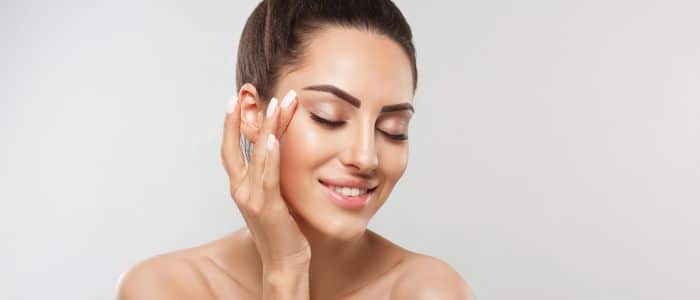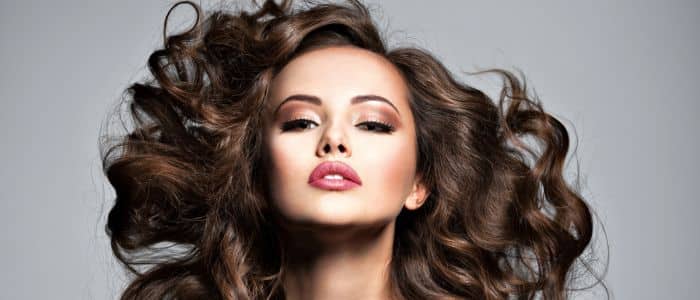
Table of Contents
- Facial Golden Ratio – What Makes a Face Beautiful
- What Is the Facial Golden Ratio?
- Basic Concepts of Facial Proportions
- Analysing the Facial Golden Ratio
- Famous Examples of the Facial Golden Ratio
- Can Beauty Be Enhanced Through Plastic Surgery?
- Plastic Surgery Procedures to Enhance the Features of the Face
- FAQs about Features that Define a Beautiful Face
- Further Reading about Face Procedures with Consultant Plastic Surgeon Anca Breahna
Facial Golden Ratio – What Makes a Face Beautiful
Beauty has been a subject of fascination and admiration for centuries. People have studied and tried to understand what makes someone attractive since ancient times. While the definition of beauty may vary across different cultures and regions, some features are universally considered to define a beautiful face. These features include symmetry, proportionality, clear and smooth skin, bright eyes, well-defined cheekbones and jawline, and an overall harmonious appearance.
In this blog, we will get into the science and art of beauty and explore the features that define a beautiful face. We will discuss the role of genetics, culture, and personal preferences in defining beauty and the cosmetic procedures that can enhance these features. This blog will provide valuable insights and information if you are considering cosmetic enhancements.
Chester Consultant Plastic Surgeon Anca Breahna is committed to helping her patients achieve their desired beautiful facial features.
What Is the Facial Golden Ratio?
Have you ever wondered what makes a face beautiful? It turns out that there is a mathematical formula known as the facial golden ratio that can help us answer this question. The facial golden ratio is a mathematical formula used to determine a beautiful face’s proportions. It is based on the ancient Greek concept of “golden proportion” or “divine proportion”. This concept states that certain facial features should be in proportion to each other to create a balanced and aesthetically pleasing face.
The facial golden ratio is an essential concept in art, architecture, and design, but it has also been used to analyse faces and determine what makes them beautiful. It is based on the idea that certain facial features, such as the nose, eyes, and chin, should be proportionate to each other to create a pleasing, balanced face.
Basic Concepts of Facial Proportions
Before we dive into the facial golden ratio, it is important to understand the basics concepts of facial proportions. Our face is composed of several features, such as the forehead, nose, eyes, and chin. Each feature should be in proportion to each other to create an aesthetically pleasing face.
For example, the eyes should be evenly spaced and the distance between them should be equal to the width of one eye. The nose should be in the centre of the face and the distance between the eyes and the nose should be equal. The lips should be cantered and the chin should be in line with the eyes.
Another factor is symmetry. Symmetry is when both sides of the face are the same, or nearly the same. Symmetry is a crucial factor in determining beauty.
Analysing the Facial Golden Ratio

In order to analyse the facial golden ratio, we need to measure the distance between certain facial features. This can be done by measuring the distance between the eyes, nose, and chin. We can then compare these measurements to the facial golden ratio to see if the face is in proportion.
How to Measure Facial Proportions
Several methods can be used to measure the distance between certain facial features.
- The first method is to use a ruler or measuring tape. It is the most accurate method as you can measure the exact distance between the facial features.
- The second method is to use a photo measuring app. There are several apps available that allow you to measure the distance between facial features. This is a less accurate method but it is still good for measuring the facial golden ratio.
- The third method is to use a facial recognition software. It is the least accurate method but it is useful as it can give you an approximate measurement of the facial features.
Famous Examples of the Facial Golden Ratio
Some of the most famous examples include Brad Pitt, Angelina Jolie, and Scarlett Johansson.
- Brad Pitt has often been cited as having the perfect facial proportions. His nose, eyes, and chin are all proportionate, and his face is very symmetrical.
- Angelina Jolie is also said to have the perfect facial golden ratio. Her face is symmetrical and her features are in proportion to each other.
- Scarlett Johansson also has perfect facial golden ratio. Her face is symmetrical and her facial features are proportionate and balanced.
These three examples demonstrate the importance of facial proportions and symmetry in creating a beautiful face.
Can Beauty Be Enhanced Through Plastic Surgery?
People often resort to plastic surgery to enhance the features of the face and improve the facial golden ratio.
For example, rhinoplasty is a surgical procedure that can reshape the nose and make it more symmetrical. It can also be used to correct any asymmetries in the nose and improve the facial golden ratio.
In addition, chin augmentation is another surgical procedure that can be performed to improve the facial golden ratio. This procedure can reshape the chin and make it more symmetrical.
Finally, skin relaxant injections and fillers can also be an option to improve the facial symmetry. These procedures can be performed to fill in wrinkles and fine lines, creating a more youthful and symmetrical appearance.
Plastic Surgery Procedures to Enhance the Features of the Face
There are features of the face that can be improved with plastic surgery, and different procedures can be recommended to achieve symmetry and balanced proportions. Some of these features and procedures include:
1. Nose shape and size
Rhinoplasty can reshape and resize the nose to improve facial symmetry and balance. Since the nose is the central feature of the face, the aspect of the nose is crucial when it comes to facial beauty. Having a nose that is proportionate to the rest of the face is essential to achieve an aesthetically pleasing face. And this is probably one of the reasons why nose jobs are so in demand nowadays. For those seeking less invasive options, non-surgical nose reshaping with dermal fillers offers a popular alternative to surgery.
2. Chin shape and size
Chin augmentation can improve the shape and size of the chin, creating a more balanced and proportionate appearance.
3. Cheekbones
Cheek augmentation can enhance the shape and volume of the cheekbones, creating a more defined and symmetrical appearance. High cheeks have always been considered a sign of beauty.
4. Jawline
Jaw surgery or chin augmentation can improve the shape and size of the jawline, creating a more defined and balanced appearance. A better contour for the jawline and improved definition can help you get a more aesthetically pleasing face.
5. Lips
Lip augmentation can increase the size and improve shape of the lips, creating a more balanced and symmetrical appearance. We have been fascinated with voluptuous lips for decades now and new methods and techniques are developed every year to help patients get lips that are plumper, fuller and more appealing.
6. Eyebrows
Brow lift surgery can lift and reshape sagging eyebrows, creating a more youthful and balanced appearance.
7. Eyelids
Blepharoplasty can correct drooping eyelids or remove excess skin and fat from the upper or lower eyelids, creating a more youthful and vibrant appearance.
It is important to remember that the optimal procedure or combination of procedures to achieve symmetry and balanced proportions will depend on the individual’s unique facial features and desired outcome. A qualified and experienced plastic surgeon can provide personalised recommendations and help guide the decision-making process.
FAQs about Features that Define a Beautiful Face

What are some features that define a beautiful face?
Features that are commonly considered to define a beautiful face include symmetrical and proportionate facial features, clear and smooth skin, bright eyes, well-defined cheekbones and jawline, and a harmonious overall appearance.
Are attractive facial features universal or do they vary by culture?
There is some variation in what is considered beautiful across different cultures and regions. However, many features that define a beautiful face are consistent across cultures, such as symmetry, clear skin, and proportionate features.
Can I get attractive facial features with plastic surgery?
Plastic surgery can help enhance some features that define a beautiful face, such as nose shape, chin shape, and cheekbone definition. However, it is important to approach plastic surgery with realistic expectations and to prioritise safety and health over aesthetics.
Are there any non-surgical options to enhance facial features?
There are non-surgical options to enhance the features that define a beautiful face, such as facial contouring with injectable fillers, muscle relaxant injections and other cosmetic procedures. When it comes to non-surgical options it is important to keep in mind that the results are usually not permanent – the procedures often need to be performed again after a few months.
What are the most commonly performed plastic surgery procedures for the face?
There are several plastic surgery procedures that are commonly performed on the face, including facelift, rhinoplasty, blepharoplasty, brow lift, chin augmentation, otoplasty and fat grafting. Qualified plastic surgeons should perform these procedures to achieve optimal results. Facial plastic surgery can be tailored to meet each patient’s specific needs and goals.
Medical References about Facial Plastic Surgery
- Attractive People: How Society Defines Physical Attractiveness
- Blepharoplasty: An Overview – PMC
- Facial Chin Augmentation – StatPearls – NCBI Bookshelf
- Otoplasty – StatPearls – NCBI Bookshelf
- Current concepts in lip augmentation
Further Reading about Face Procedures with Consultant Plastic Surgeon Anca Breahna
- Read more about Lip Fillers
- Read more about Lip Flip
- Read more about Upper Blepharoplasty
- Read more about Pinnaplasty (Bilateral)
- Read more about Dermal Fillers Removal – How Do They Work?
- Read Anca’s Blog about Ears that Stick Out – Causes and Treatments
- Read Anca’s Blog about Minimally Invasive Facelift Alternatives






